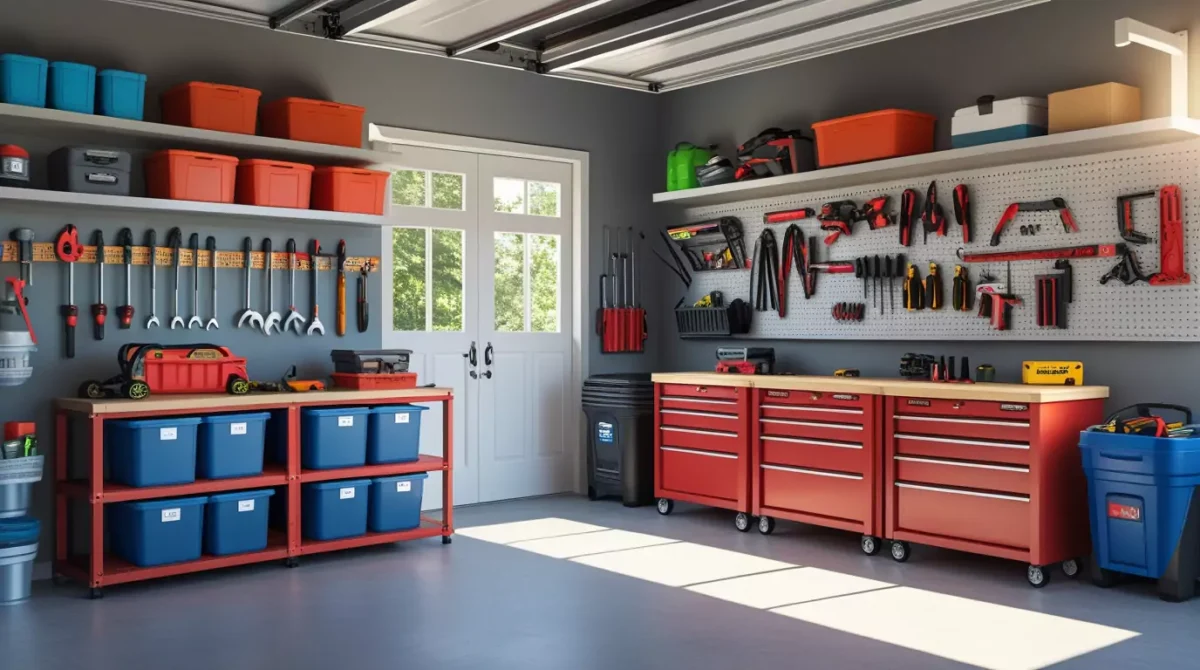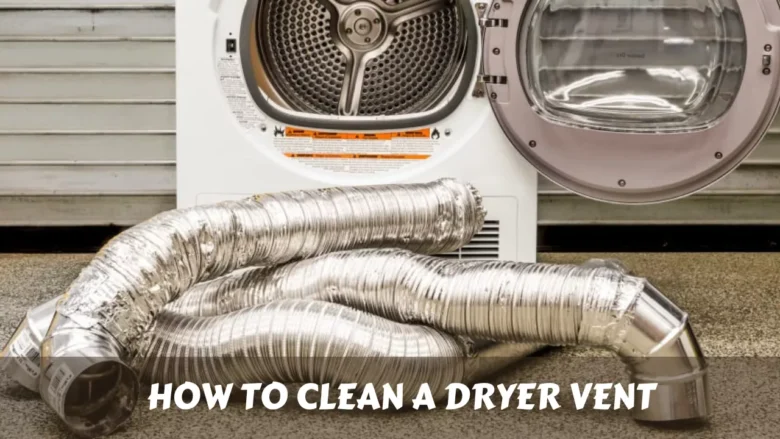How to organize garage storage using modular interlocking systems – that’s probably why you’re here, right?
Your garage looks like a tornado hit it.
Tools scattered everywhere.
Boxes stacked like a game of Jenga.
And you can’t find anything when you actually need it.
I get it.
I used to have the same problem until I discovered modular interlocking systems.
Now my garage is so organized, my neighbors think I hired a professional organizer.
Jump to
ToggleWhy Your Current Storage System Isn’t Working
Most people throw stuff in their garage and hope for the best.
They buy random shelving units.
Toss things in cardboard boxes.
And wonder why everything becomes a mess again in two weeks.
The problem isn’t you.
The problem is you don’t have a system.
What Are Modular Interlocking Systems?
Think of them like adult LEGOs for your garage.
These are storage components that connect together.
They expand as your needs grow.
They adapt when you need different configurations.
And they actually make organizing fun (seriously).
The best part?
You can start small and build up over time.
The Big Benefits That Actually Matter
Flexibility That Grows With You
- Move pieces around without buying new stuff
- Add components when you need more space
- Reconfigure layouts when your needs change
- No wasted money on storage that doesn’t fit
Stronger Than Traditional Storage
- Interlocking design distributes weight better
- Less wobbling than standalone units
- Handles heavy tools and equipment
- Lasts longer than cheap shelving
Saves You Time and Sanity
- Everything has a designated spot
- No more digging through piles
- Quick visual inventory of what you have
- Less time cleaning, more time doing
Step-by-Step: How to Organize Garage Storage Using Modular Interlocking Systems
Step 1: Empty Everything Out
I know it sounds brutal.
But you can’t organize what you can’t see.
Pull everything out of your garage.
Sort into piles:
- Keep and use regularly
- Keep but use occasionally
- Donate or sell
- Trash
Be ruthless here.
That broken lawn mower you’ve been “meaning to fix” for three years?
Time to let it go.
Step 2: Measure Your Space
Grab a tape measure.
Write down:
- Wall dimensions
- Ceiling height
- Where your car needs to fit
- Electrical outlets and switches
- Any obstacles like garage door tracks
This prevents expensive mistakes later.
Step 3: Choose Your System
Not all modular systems are created equal.
Look for:
- Heavy-duty materials (steel or high-grade plastic)
- Multiple connection points (more stable)
- Expandable options (room to grow)
- Compatible accessories (bins, hooks, drawers)
Popular brands include Gladiator, Rubbermaid FastTrack, and StoreWALL.
Step 4: Plan Your Layout
Start with the heavy stuff.
Put frequently used items at eye level.
Store seasonal items up high.
Keep dangerous items (chemicals, sharp tools) locked up and away from kids.
Draw it out on paper first.
Trust me on this one.
Step 5: Install Your Base System
Follow the manufacturer’s instructions exactly.
Use a level for everything.
Find the studs in your walls.
This isn’t the time to wing it.
A crooked system will drive you crazy every time you look at it.
Step 6: Add Components Strategically
Don’t buy everything at once.
Start with the basics:
- Shelving for boxes and bins
- Hooks for hanging tools
- Cabinets for items you want hidden
Add more components as you figure out what you actually need.
Smart Storage Solutions for Different Items
Tools and Hardware
- Pegboard panels for hand tools
- Drawer units for small parts and screws
- Tool hooks for larger items
- Clear bins so you can see what’s inside
Sports Equipment
- Ball holders that keep everything contained
- Rack systems for bikes and golf clubs
- Large hooks for bags and protective gear
- Open shelving for easy access
Seasonal Items
- High shelving for things used once or twice a year
- Large bins with labels
- Climate-controlled cabinets for sensitive items
- Easy-access areas for items you swap seasonally
Car Supplies
- Liquid storage for oils and fluids
- Tool organization for car maintenance
- Wash supply station for cleaning products
- Emergency kit area for roadside supplies
Common Mistakes That’ll Cost You Money
Buying Cheap Systems
I learned this the hard way.
That $50 system from the big box store?
It’ll be sagging and wobbling within six months.
Invest in quality the first time.
Not Planning for Growth
Your storage needs will change.
Buy systems that can expand.
Don’t paint yourself into a corner with fixed solutions.
Ignoring Weight Limits
Just because it fits doesn’t mean it should go there.
Check weight ratings for everything.
Overloaded systems fail catastrophically.
Forgetting About Access
Don’t store your snow shovel behind your Christmas decorations.
Think about when and how often you’ll need things.
Plan your layout accordingly.
Budget-Friendly Ways to Get Started
Phase Your Installation
- Month 1: Basic shelving and hooks
- Month 2: Add drawer units
- Month 3: Install specialty components
- Month 4: Add accessories and bins
Mix Systems Strategically
You don’t need everything from one brand.
Use premium systems for heavy-duty areas.
Add budget options for lighter storage.
Just make sure they work together visually.
DIY Some Components
- Make your own labels
- Build simple platforms for bins
- Create custom dividers for drawers
- Paint everything the same color for cohesion
Maintenance That Actually Works
Monthly Quick Checks
- Tighten any loose connections
- Wipe down surfaces
- Return items to their designated spots
- Check for overloading
Quarterly Deep Organization
- Reassess what you’re storing
- Adjust layouts based on usage patterns
- Clean out accumulated clutter
- Plan any system expansions
Annual Overhaul
- Deep clean everything
- Evaluate system performance
- Upgrade worn components
- Reorganize based on changing needs
Frequently Asked Questions
How much should I expect to spend on a modular system?
Plan on $500-$2000 for a typical two-car garage, depending on how elaborate you go. Start with basics and build up over time.
Can I install these systems myself?
Most systems are designed for DIY installation. You’ll need basic tools and the ability to find wall studs. Budget a weekend for a full installation.
Will these systems work in an unheated garage?
Quality systems handle temperature extremes fine. Avoid cheap plastic that can become brittle in cold weather.
How do I know if my walls can support the weight?
Most residential garage walls can handle standard loading when properly anchored to studs. Consult the manufacturer’s specs for heavy-duty applications.
Can I move the system if I relocate?
That’s the beauty of modular systems – most components can be disassembled and reinstalled in a new location.
What’s the best way to label everything?
Use a label maker with clear tape. It looks professional and withstands garage conditions better than handwritten labels.
Real Talk: Is This Worth the Investment?
You’re going to spend money on garage storage anyway.
The question is whether you spend it once on a system that works.
Or keep throwing money at cheap solutions that fail.
I’ve seen people spend more on failed attempts than they would have on a quality system.
The time savings alone pays for itself.
Not to mention the peace of mind of actually being able to find your stuff.
Your Next Steps
Start with one wall.
Pick the area that drives you the craziest.
Get that section dialed in perfectly.
Then expand from there.
Don’t try to do everything at once.
You’ll get overwhelmed and quit.
How to organize garage storage using modular interlocking systems isn’t rocket science – it just takes a plan and the right components working together.
Your future self will thank you every time you walk into that organized garage.
Trust me on this one.






